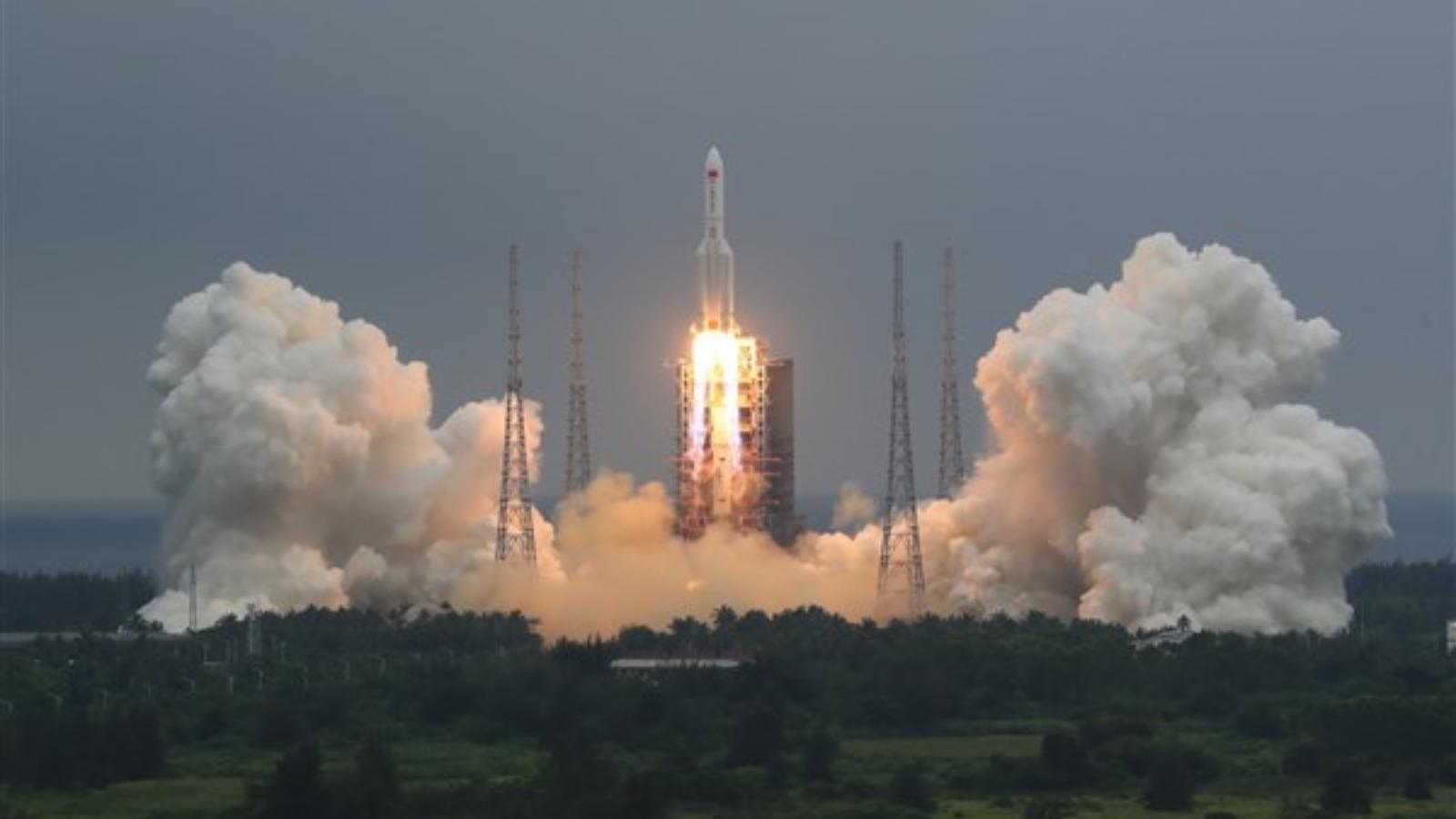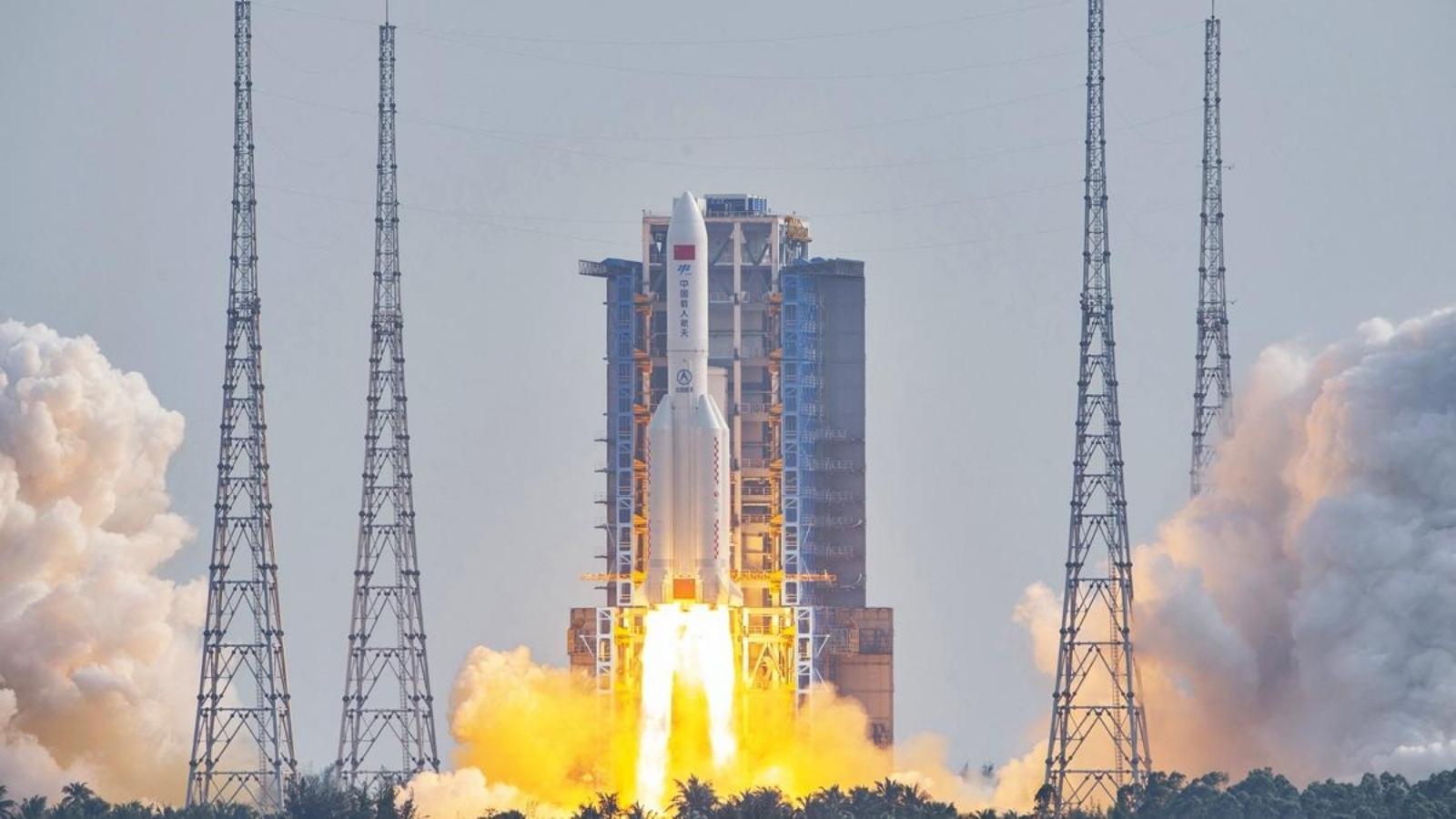
Astrobotic's Peregrine lunar lander encountered bo...

 image credit: space[/caption]
Moreover, SpaceX's Falcon 9 and Falcon Heavy, which both land in one piece for potential future reuse, are examples of orbital rockets whose first stages are designed to be quickly thrown into the ocean or over uninhabited terrain following launch. However, the Long March 5B core stage is unable to steer itself down once it enters orbit and must instead rely on the atmospheric drag to carry out the difficult tasks.
[caption id="attachment_59180" align="aligncenter" width="1600"]
image credit: space[/caption]
Moreover, SpaceX's Falcon 9 and Falcon Heavy, which both land in one piece for potential future reuse, are examples of orbital rockets whose first stages are designed to be quickly thrown into the ocean or over uninhabited terrain following launch. However, the Long March 5B core stage is unable to steer itself down once it enters orbit and must instead rely on the atmospheric drag to carry out the difficult tasks.
[caption id="attachment_59180" align="aligncenter" width="1600"] image credit: nypost[/caption]
Furthermore, the majority of the rocket body will burn up in the stratosphere. However, some of the more resilient parts of the rocket body will make it all the way to the earth when it crashes to the ground on Friday, perhaps harming people and property close to the reentry route.
image credit: nypost[/caption]
Furthermore, the majority of the rocket body will burn up in the stratosphere. However, some of the more resilient parts of the rocket body will make it all the way to the earth when it crashes to the ground on Friday, perhaps harming people and property close to the reentry route.
The space junk issue According to NASA, over 500,000 bits of space trash between 1 cm and 10 cm in diameter and about 25,000 objects larger than 10 cm are in orbit. The speed of these debris bits across orbit can reach 33,000 mph, which is quicker than a bullet. [caption id="attachment_59181" align="aligncenter" width="1600"]Our latest prediction for #CZ5B rocket body reentry is: ?04 Nov 2022 11:20 UTC ± 3 hours Reentry will be along one of the ground tracks shown here. It is still too early to determine a meaningful debris footprint. Follow here for updates: https://t.co/KZZ9LgLk0k pic.twitter.com/GlnE8C0Iok
— The Aerospace Corporation (@AerospaceCorp) November 3, 2022
 image credit: indiatoday[/caption]
Additionally, the U.S. Global Surveillance Network is currently monitoring 30,000 items greater than 4 inches (10 cm) in size. According to the European Space Agency, one million particles are currently orbiting the Earth at a speed of 0.4 inches (1 cm).
image credit: indiatoday[/caption]
Additionally, the U.S. Global Surveillance Network is currently monitoring 30,000 items greater than 4 inches (10 cm) in size. According to the European Space Agency, one million particles are currently orbiting the Earth at a speed of 0.4 inches (1 cm).
According to research, during the next ten years, humanity will be minimally yet significantly impacted by space debris returning to Earth. And this is more likely to happen at southern latitudes as opposed to northern ones. According to the analysis, there are approximately three times as many odds of a rocket body crashing at the latitudes of Dhaka, Bangladesh, Jakarta, Indonesia, or Lagos, Nigeria as there are in New York, Moscow, and Beijing.Space-based sensors using HEO Inspect caught the #CZ5B rocket as it continues its uncontrolled re-entry back to Earth. Our space-to-space imagery and intelligence supports strategic decision-making and accountability efforts by making space transparent. Powered by @Satellogic pic.twitter.com/kPZfSypFlA
— HEO Robotics (@heorobotics) November 3, 2022
Leave a Reply






